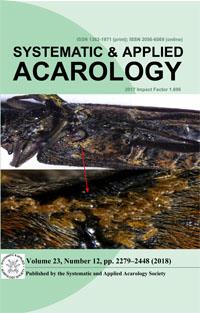Gaeolaelaps aculeifer (Canestrini) is a well-known generalist predator currently commercialized to control several edaphic organisms, including Diptera larvae and thrips pre-pupae and pupae. The recent detection of this species in the Bogotá plateau of Colombia raised the interest to investigate details about the biology of this new population and evaluate its potential as a biological control agent for use in that country against Frankliniellaoccidentalis Pergande (Thripidae), the western flower thrips. The objective of this study was to evaluate experimentally the biological characteristics of the Colombian population of G. aculeifer and its predation capacity on F. occidentalis, as well as the possibility to use a factitious prey for its mass production or as complementary food in predator field releases. The study was conducted with three diets: F. occidentalis (T), Aleuroglyphus ovatus (A), and A. ovatus + F. occidentalis (TA), in a randomized design experiment using G.aculeifer females. Predation rate was about 2.6 pre-pupae/pupae of F.occidentalis/female/day when only thrips was available as prey, reducing to 2.0 when thrips was combined with A.ovatus. Oviposition was the same when fed each of those prey and their combination (2.5–2.9 eggs/female/day). Some differences between diets were observed for duration of some periods of the life cycle, but no differences were observed for life table parameters. The greatest differences observed between this population and what has been reported for other populations of the same predator (evaluated when feeding other prey) refer to duration of deutonymphal period and Ro (respectively longer and higher in the former). It is concluded that the Colombian population is able to feed, develop, and reproduce on pre-pupae and pupae of F. occidentalis and that A. ovatus can be used for its small scale mass production and as a complementary diet in predator field releases.
How to translate text using browser tools
12 December 2018
Colombian population of the mite Gaeolaelaps aculeifer as a predator of the thrips Frankliniella occidentalis and the possible use of an astigmatid mite as its factitious prey
Diana Rueda-Ramírez ,
Diana Rios-Malaver,
Amanda Varela-Ramírez,
Gilberto J. De Moraes
ACCESS THE FULL ARTICLE
biological control
Colombia
Laelapidae
life cycle
mite diet
predation





